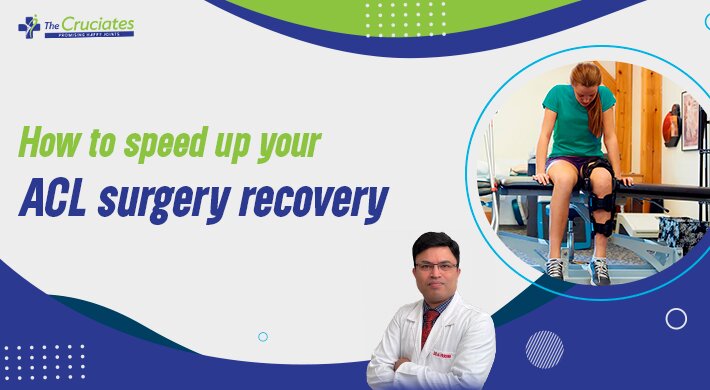[rank_math_breadcrumb]
Table of Contents
Tips for Healing Faster after ACL Surgery
Before Surgery
The decision of when to have ACL surgery is an important one. The timing of the surgery can affect how quickly you return to full activity and ability. It is advisable to wait until the point where you can achieve full Range of Motion before surgery and this should not be rushed. Also, it is important that you select a Best ACL Surgeon who specializes in ACL injury management. wrong decisions may lead to complications and may end your sports career.
After Surgery
- Wear a knee brace all day and it should be continued for a minimum of 4 weeks.
- Always walk with a walker for the initial few weeks. The patient is allowed full weight bearing during this period.
- Physiotherapy starts immediately after the surgery in the form of an ankle pump and static quadriceps exercises. The ankle pump and static quadriceps exercises are often overlooked and can help with the strength of the muscles around the knee joint.
- Ice application 3-4 times a day for 20 minutes each is also important for reducing swelling and aiding in the healing process.
- Keep the body well hydrated. The patient is encouraged to drink plenty of fluids, this helps to maintain circulation and promotes healing.
Finally, adequate rest is essential for a speedy recovery. During the initial post-op weeks, it’s best to sleep on your back or side rather than on your stomach so that you don’t put pressure on your lower body.
At Home
A high protein diet, wound care, a supporting atmosphere, and watching for danger signs like wound infection are all helpful in speeding up the healing process. For instance, a high protein diet can help rebuild muscle strength. Proper wound care should be taken till it heals completely. Watch for danger signs like wound infection so that you can prevent further complications. Any suspicious discharge would need emergency care and proper management.
It is very important that you seek medical attention if any of these signs occur as soon as possible for better healing chances. Furthermore, a supportive atmosphere may be helpful because it is important to have those who care about you around you during this time so they can offer emotional support as well. It is important to stay active and engaged in the healing process so that you can get back on your feet.
Physical Therapy
Physiotherapy starts immediately after the surgery in the form of an ankle pump and static quadriceps exercises. It is continued till complete recovery which is nearly about 3 months. Keep in touch with your ligament surgeon on regular basis for the best results. It’s important to focus on getting a complete knee extension first. Without full extension, normal gait cannot be achieved.
Knee flexion should be gradual and it’s recommended that you should get 30 degrees in the first week. By the 2nd week, you should be flexing all the way up to 60 degrees, 90 degrees by the end of 3rd week and full knee flexion by 4th week.
Between 7 and 12 weeks after surgery, you should be able to jog around a field or do close chain exercises like resistance band exercises. Open chain exercises are not allowed until 12 weeks post-surgery. You will most likely be able to return to normal activity during this time period.
Other possibilities include doing half squats on your knees. You can slowly start doing more weight-bearing exercises as well, but it’s important not to rush into anything too quickly; overdoing it can lead to more damage or problems late down the line.
Overall Recovery Plan
It’s important to always choose the best ACL surgeon for the best results. In addition, customized recovery protocols are very important for giving you the best result. This will help with speeding up your recovery time and making sure that you get back on track as quickly as possible. So, choosing your sports injury surgeon wisely is a crucial step in speeding your recovery.
Staying Motivated
The Cruciates is a team of highly experienced and skilled surgeons who are in the sports medicine field from a long time and have dealt with complicated sports injuries. Dr. Nagendra Prasad is one of the best arthroscopy surgeons in India leads the team.
The Cruciates is committed to deliver high-quality services and would like to make sure that, you are satisfied with our work. The team Cruciates provides customized treatment and follow up to each patient to make sure that everyone will achieve desired level of recovery and rehabilitation to ensure early return to sports.

